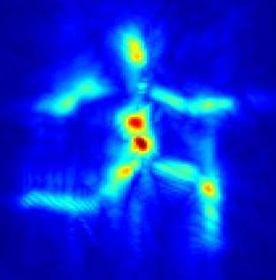You Never Know What’s Lurking Around The Corner. Well, Until Now…
-
-
slice.mit.edu
Filed Under
Recommended
 The Media Lab’s Camera Culture group, led by associate professor Ramesh Raskar and postdoctoral researcher Andreas Velten, has designed a camera that can see around corners. The research was published in a March issue of Nature Communications.
The Media Lab’s Camera Culture group, led by associate professor Ramesh Raskar and postdoctoral researcher Andreas Velten, has designed a camera that can see around corners. The research was published in a March issue of Nature Communications.The camera’s system is similar to a periscope but, rather than using angled mirrors to redirect light, it uses a femtosecond laser and opaque surfaces. To peer into a room outside of a camera’s line of sight, the laser emits quick bursts of light (measure in quadrillionths of a second) against the wall opposite an open doorway. The light reflects off the wall and into the doorway, bounces around the unseen room, and re-emerges.
From geek.com:http://youtu.be/JWDocXPy-iQ“MIT Media Lab utilizes a laser pulse to bounce photons off surfaces to see what the camera can’t. If the photons hit an object, they bounce back and reach the camera. In so doing, the camera can measure how far away the unseen object is.
The unit MIT labs has used has a time resolution of two picseconds, which means it can detect how far light has traveled with an accuracy of 0.6 millimeters.”
Video courtesy of NatureThe system is repeated several times, bouncing light off different spots on the wall and entering the room at various angles before returning to the camera. By comparing the times at which the light returns to the camera, the system can deduce the distance traveled by the laser. The end result is a low-resolution three-dimensional image that shows the geometry of the unseen area. The current prototype takes several minutes to form an image, but the Media Lab team is working to reduce it to less than 10 seconds.
The Camera Culture team also made headlines in December 2011 when they relased a trillion-frame-per-second video of a burst of light traveling the length of a plastic bottle.


